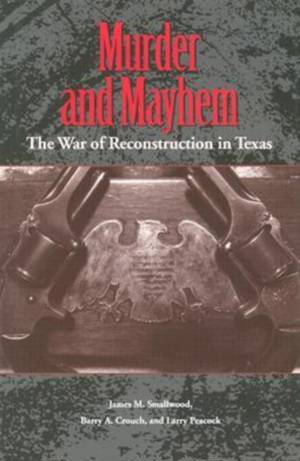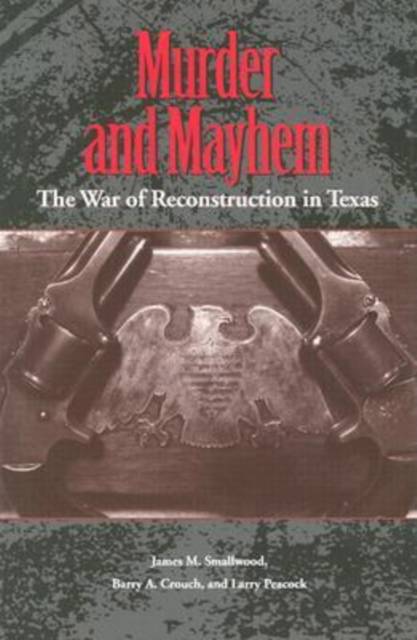
- Retrait gratuit dans votre magasin Club
- 7.000.000 titres dans notre catalogue
- Payer en toute sécurité
- Toujours un magasin près de chez vous
- Retrait gratuit dans votre magasin Club
- 7.000.0000 titres dans notre catalogue
- Payer en toute sécurité
- Toujours un magasin près de chez vous
Murder and Mayhem
The War of Reconstruction in Texas
James M Smallwood, Barry A Crouch, Larry Peacock
38,45 €
+ 76 points
Description
In the states of the former Confederacy, Reconstruction amounted to a second Civil War, one that white southerners were determined to win. An important chapter in that undeclared conflict played out in northeast Texas, in the Corners region where Grayson, Fannin, Hunt, and Collin Counties converged. Part of that violence came to be called the Lee-Peacock Feud, a struggle in which Unionists led by Lewis Peacock and former Confederates led by Bob Lee sought to even old scores, as well as to set the terms of the new South, especially regarding the status of freed slaves. Until recently, the Lee-Peacock violence has been placed squarely within the Lost Cause mythology. This account sets the record straight. For Bob Lee, a Confederate veteran, the new phase of the war began when he refused to release his slaves. When Federal officials came to his farm in July to enforce emancipation, he fought back and finally fled as a fugitive. In the relatively short time left to his life, he claimed personally to have killed at least forty people--civilian and military, Unionists and freedmen. Peacock, a dedicated leader of the Unionist efforts, became his primary target and chief foe. Both men eventually died at the hands of each other's supporters. From previously untapped sources in the National Archives and other records, the authors have tracked down the details of the Corners violence and the larger issues it reflected, adding to the reinterpretation of Reconstruction history and rescuing from myth events that shaped the following century of Southern politics.
Spécifications
Parties prenantes
- Auteur(s) :
- Editeur:
Contenu
- Nombre de pages :
- 200
- Langue:
- Anglais
- Collection :
- Tome:
- n° 6
Caractéristiques
- EAN:
- 9781585442805
- Date de parution :
- 03-11-03
- Format:
- Livre relié
- Format numérique:
- Genaaid
- Dimensions :
- 163 mm x 245 mm
- Poids :
- 476 g

Les avis
Nous publions uniquement les avis qui respectent les conditions requises. Consultez nos conditions pour les avis.






